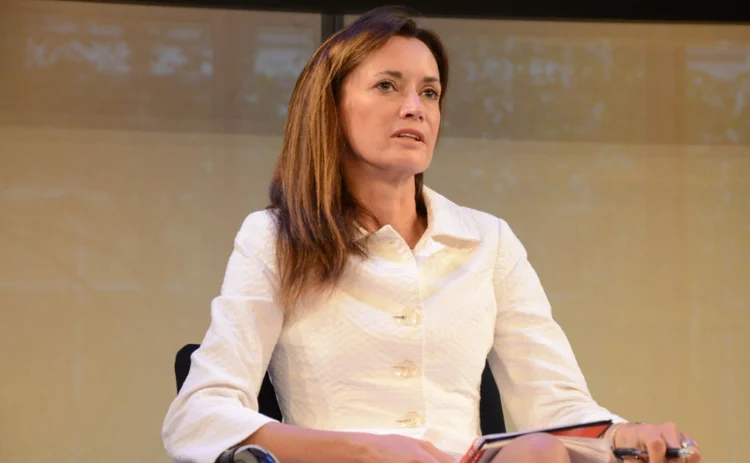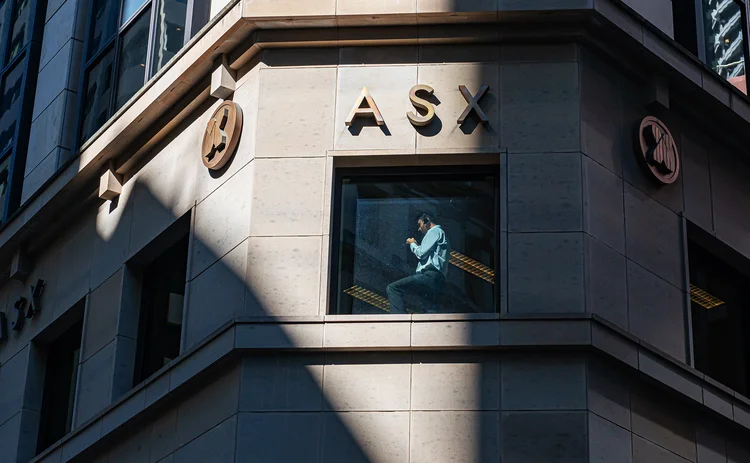Ace high or busted flush? Digital Asset’s mixed fortunes mirror DLT adversity
The vendor hoped to remodel post-trade using blockchain technology—and it still might—but its bumpy progress raises questions over the future of DLT in finance.

Avoid popularity if you would have peace. These words are attributed to Abraham Lincoln, but they could easily have been spoken by an executive at a tech startup fending off hype and hyperbole around the Latest Great Tech Discovery.
In the mid-2010s, distributed ledger technology, or DLT, was just that: the toast of venture capitalists and the talk of conferences. For many, the excitement surrounding DLT compared with some of the most transformative developments in modern capital markets: electronification, big data, cloud, and AI.
In the surge of DLT enthusiasm, one company was seen as a poster child for the technology: Digital Asset Holdings.
“They were sort of the leader—they attracted the most attention,” says Craig Pirrong, a professor of finance at the University of Houston. “There was a huge amount of blockchain and DLT related activity during that time, and it looked like it might even be another dotcom boom. Digital Asset Holdings were the first indicator of that possibility.”
However, the possibility has yet to become a reality. In its 10-year history, Digital Asset has enjoyed headline-grabbing wins and suffered embarrassing lows, mirroring the ups and downs of DLT’s frustratingly slow evolution in the capital markets.
Over that time, investors have ploughed billions of dollars into companies such as Digital Asset, betting that the tech would deliver on its promise to revolutionize the plumbing of the financial system with the introduction of smart contracts, friction-free settlement, and bulletproof record-keeping.
Some startups have thrown in the towel, or pivoted away from DLT. Digital Asset has stuck with the fight, and its own fortunes will help determine whether the technology fulfils its early potential or whether the roaring tiger ends up a white elephant.
What deters some institutions from embracing distributed ledger technology, experts say, is its link with the wild child of financial markets: cryptocurrencies. Most major cryptos such as bitcoin and ether are founded on the blockchain, a form of DLT. The crypto industry has been beset with instances of fraud and corporate malfeasance, which—fairly or not—has tainted the image of the technology underpinning it. This guilt by association has stalled the progress of DLT.
According to a European Banking Authority survey, 46% of EU banks were experimenting with DLT in 2023, down from a peak of 64% in 2019. Only 25% of banks indicated that their pilots had reached ‘in use’ status during that time.
The finance industry’s most famous replacement project using distributed ledger technology is the upgrade of Australian Securities Exchange’s cash equities clearing and settlement system. After years of development work costing hundreds of millions of dollars, ASX abandoned the project in 2022—or “paused” it, in corporate speak. ASX later commissioned Tata Consulting Services to run the replacement, with DLT not part of the new core system.
The scrapping of the project shook the world of DLT. One blockchain startup founder believes that it “cast a very skeptical light on blockchain projects as being a waste of money and time. … I think it brought a lot of institutional skepticism on DLT as being the next shiny thing that never really worked out.”
Digital Asset is now pinning its hopes on its smart contract language, Daml. The firm has made the language available to developers in open-source format, and is integrating Daml onto enterprise platforms that build distributed ledgers. The company is also promoting its Canton network of applications that are built with Daml. A recent pilot project brought together several dozen financial institutions to settle a sequence of dummy trades over the network.
On July 1, the company unveiled an infrastructure called the Global Synchronizer, designed to help applications on Canton connect to each other. The company says this announcement brings the Canton network into live production.
But the emergence of Canton has sparked a debate over interoperability with other providers. If Canton can’t mesh with DLT networks such as Corda and Besu, companies will have to choose between them. Some in the industry are against such a winner-takes-all approach. Digital Asset says it will make its network interoperable when clients demonstrate a solid business case for it.
WatersTechnology spoke with more than 20 industry experts to better understand the vendor’s ups and downs, and how those milestones mirror DLT’s struggles to get true, live implementations in the capital markets today… and tomorrow.
De-fi-fo-fum
The origins of Digital Asset date back to a fateful mezcal shot at a bar in New York’s trendy SoHo neighborhood. This was the night when the company’s co-founders gathered to share ideas and discuss opportunities in the nascent blockchain industry. The group included Don Wilson, founder of eponymous Chicago prop-trading shop DRW; Yuval Rooz and Eric Saraniecki, both DRW employees; crypto expert and software engineer Shaul Kfir; and Sunil Hirani, a three-time founder of other fintechs Creditex, TrueEX, and TassatPay.
The men already developed the germ of an idea about the markets of the future. The throat-burning round of mezcal sealed the group’s determination to pursue their ambitious vision. In 2014, they founded Digital Asset Holdings.
At first, it was not entirely clear what exactly Digital Asset would do. “When we started the company, we were trying to figure out the different directions that we could enter the market,” says Rooz, who started as Digital Asset’s founding chief technology officer before becoming CEO in 2019. He and his co-founders shared the view that one day, all commerce and financial activity would be transacted using digital assets—instruments that are processed digitally from front to back. Rooz thinks that he might have reached this belief “too early”, but he is still convinced that markets will eventually be fully digital.
In its early days, sources close to the company say, Digital Asset seemed like it might use cryptocurrencies to help market participants settle transactions of other assets. At the time, the fault lines between the fully open public blockchains underpinning major cryptocurrencies and the startups promising to build permissioned DLT for regulated financial institutions were yet to emerge.
I don’t think that the technology matters, as long as you achieve the business outcome
Yuval Rooz, Digital Asset
“Shortly after we started the company, a thing called Ethereum got started, and I have to say we were in disagreement with the Ethereum model,” Rooz says. Ethereum is a programmable blockchain designed as the bedrock of a decentralized financial ecosystem. It came with its own protocol and a rule book laying out how the system and its native cryptocurrency, ether, would be run.
For Rooz, Ethereum did not represent a radical departure from the bitcoin model that had so far dominated the blockchain landscape. It introduced the idea of a program built on top of transactions on a blockchain, but maintained the principle of a single ledger underpinning a wide range of different applications. Because the record of transactions on the Ethereum blockchain is publicly visible, it also lacked the privacy that regulated financial institutions insist on.
Rooz was also unimpressed by Ethereum’s pricing model. The network rewards users who help verify transactions with fees known as ‘gas’, which rise when demand for transactions is higher. This model helped to incentivize participation in the network, and to tie the value of the coin to supply and demand. Rooz says it is not scalable, though. “Imagine someone built a toll road, and the fee to participate in the toll road is based on congestion, and they just made one lane. How convenient!”
In the years that followed, the term ‘decentralized finance’ or ‘DeFi’ was coined, setting apart those calling for a fully decentralized financial system, doing away with intermediaries such as brokers and banks, from those who saw the technology revolutionizing the existing financial system, but not replacing it.
Three rapid acquisitions in 2015 provided insight into DA’s direction of travel. The first was Bits of Proof, which provides servers for enterprise blockchain. That was followed by the addition of Hyperledger, a platform allowing financial institutions to build private blockchains. Finally, it snapped up Blockstack.io, which offers ‘blockchain-as-a-service’, helping financial institutions build applications on a private blockchain.
The company had a precocious youth. It staked out its territory as a provider of DLT systems for large financial institutions with some significant hires from established technology providers and banks: Digital Asset poached executives from Swift and SunGard in December 2015, quickly followed by senior hires from JP Morgan and Goldman Sachs.
The company’s first CEO, Blythe Masters, presided over this growth spurt. With 27 years of experience at JP Morgan, including as its youngest ever managing director as well as head of its commodities unit and chief financial officer of the investment bank, she already had a formidable reputation in the industry. Her move to the company in March 2015 made a splash. The New York Post dubbed her “the most powerful woman on Wall Street”, while Reuters reported that she had passed up an offer to run the investment bank at Barclays in favor of Digital Asset.
Pirrong says that Masters taking the reins at Digital Asset helped some naysayers to take DLT seriously. “She’s a star in the finance firmament, and notorious in some circles. She brought some instant credibility to the idea,” he says.
In January 2016, the company announced a $50 million fundraising round, with backing from banks including JP Morgan and Citi as well as market infrastructures such as the Depository Trust & Clearing Corporation and ASX. A month later, Goldman Sachs and IBM pitched in another $10 million, bringing the total amount raised to over $60 million. The next year, the company raised another $40 million in a second funding round. It was all too easy, says Rooz.
“It’s like raising money now for AI. It’s not necessarily a good thing, because it’s hard to tell who is a skeptic riding the wave versus those who are skeptical for good reasons—[these are the ones] who actually push you and challenge you,” he says. “Everybody wanted to be part of the story.”

DA was not the only startup surfing the surge of DLT optimism. Other companies also talking about applying the technology to institutional capital markets included R3 and Chain, both founded in 2014, the same year as DA. By 2015, Chain had raised around $44 million across three fundraising rounds. R3 raised $107 million in its Series A in 2017.
DLT had arrived. A senior executive at a capital markets consultancy says the exuberance of these startups was infectious. “They really thought they were going to take over the world. This was their opportunity…”
Winter of discontent
The crypto drawdowns of 2014/15 and 2019/20 provided ammunition to the blockchain doubters with their mantra of “See, I told you so! Bitcoin is not real money!”. But a bigger setback to the efforts of finance firms trying to implement DLT solutions into their workflows and infrastructures came with the crypto winter of 2022.
During the year, crypto valuations slumped and stablecoin TerraUSD and its sister token luna collapsed. Then, in November, crypto exchange FTX fell into bankruptcy, with its founder Sam Bankman-Fried embroiled in allegations of embezzlement and misuse of company funds. The dramatic implosion of a renowned crypto venue rocked the industry, and brought a sudden end to the hype surrounding bitcoin, blockchain, and all things distributed ledger.
“I think when you see three trillion bucks in web3-based asset value go down by about 70% overnight, that made people very jittery about the technology,” says a former executive at ASX. “And it shouldn’t have, because it had nothing to do with the technology at all. It was just lack of investment discipline, frauds and scammers, and whatever you want to call it.”
The aftermath of the crypto winter has shown a subtle but clear divergence between market perceptions of cryptocurrencies and the underlying technology: one a tradable asset, the other an infrastructure tool. Crypto asset valuations have rapidly recovered, with bitcoin prices north of the symbolic $50,000 mark for most of this year. Crypto derivatives products from futures to exchange-traded funds continue to gain traction both with financial institutions and retail investors as regulators in major economies soften their stance towards the securities. Meanwhile, vendors of permissioned DLTs are still trying to convince banks to shift significant volumes onto the technology, says Duncan Trenholme, co-head of digital assets at broker TP Icap.
“People in the industry can get somewhat jaded with the promise that DLT will reduce settlement fails, dramatically cut operational costs, and deliver settlement in minutes rather than days. It’s all well and good saying that, but if there isn’t material proof that it works at scale, then it can become an echo chamber. Whereas with crypto, anyone who starts using that system sees the efficiencies in practice,” Trenholme says.
A tech professional at a tier-one European bank believes the excitement around generative AI has distracted from DLT, making it harder to secure funds for new and existing projects. And unlike AI, which can easily be developed and deployed within one organization independently, DLT applications are most useful when financial institutions form a network, which demands more time spent on collaboration and more resources to put in place mutually acceptable governance structures.
The European Banking Authority survey shows that, as the number of banks experimenting with DLT and smart-contract initiatives falls, firms are exploring other forms of technology such as AI and cloud computing. The percentage of EU banks with an in-use AI project has increased from 51% in 2018 to 76% in 2023, the survey shows.
That is not to say that financial firms are preparing to drop DLT en masse. But many tech vendors now recognize the need to shift their efforts from conceptual noodling to practical use-case development.
“The sentiment around enterprise blockchain implementations at banks is that management are saying, ‘The time for experimentation is over—we need to see real use-cases, real revenue, real cost savings,’” says a senior digital assets specialist at a large sell-side institution. “Otherwise, it feels like patience is wearing a bit thin. This has been a topic for five to 10 years, there’s been a lot of money invested. And I feel from some of the teams we talk to an urgency to make it profitable, to make some use-cases work.”
Rooz says Digital Asset is also keen to demonstrate tangible progress in developing answers to real-world problems—and, to this end, the company may become more agnostic about the type of technology that it deploys.
“What you will see in our press releases is much more focused on the business problem that we’re trying to solve and how we’re solving it. And I would say that as a result of that, you will see less and less about DLT,” he says, adding: “I don’t think that the technology matters, as long as you achieve the business outcome.”
These words are reminiscent of comments made by Todd McDonald, co-founder and chief strategy officer at digital tech vendor R3, after an internal PowerPoint slide about its Corda network emerged online in early 2017, which included the words “no block chain [sic] because we don’t need one.”
After the incident, McDonald clarified that Corda does use a blockchain, but not the same type as cryptocurrencies. He told WatersTechnology in 2022 that R3 aims to “provide the ability for multiple, mildly distrusting parties to get together on a network and have some level of coordination, share information, and create, trade, and manage digital assets.”
For the senior executive at the capital markets consultancy, strategic pivots are a necessary part of operating in the world of DLT, where public opinion is constantly in flux. “Digital Asset Holdings is out there trying to raise money, as are a few others. But I think we’ll start to see these firms really struggle and have to quickly reinvent themselves in some other direction,” they say.
A report by consultancy BCG released in 2022 estimated that by 2030, tokenized assets will be worth $16 trillion dollars—or 10% of global GDP. However, critics say that real-world implementations of permissioned DLT systems are still limited.
“I still feel like we’re in that phase where the technology is new, even though it’s not,” says the senior digital assets specialist at the sell-side institution. “People have been discussing it for nigh on a decade now. But we haven’t moved past that stage where, for want of a better term, people are throwing spaghetti at a wall and saying, ‘Let’s try enterprise blockchain with trade finance. Let’s try it with carbon credits. Let’s try it with intraday FX.’”
Network effect
A potential hitch for DLT’s expansion in the industry is the idea of interoperability. Evolutions in cloud, open source, and AI—and a surge in the data that powers the IT industry—have strengthened the case for systems to be able to talk to each other. While that interconnectedness takes on different forms, closed-off monoliths are becoming a thing of the past.
For believers in permissioned DLTs, one route to interoperability is to create a network of applications that are mutually compatible. Here, Digital Asset has developed and launched its Canton network—a ‘network of networks’ allowing the various Daml applications built by financial institutions to speak to each other. If the owner of a margin system, a repo system, a trading system, and a cash registry decided to interact on this network, then a market participant could theoretically make a margin call, swap their securities for cash, and receive that cash all through a single point of entry. Digital Asset says that such a network can reduce counterparty and settlement risk, and clear the way for intraday margin as standard.
Over four days last March, 15 asset managers, 13 banks, four custodians, three exchanges, and one financial market infrastructure provider took part in a pilot of Canton, simulating transactions across their Daml applications. These included Goldman Sachs, Depository Trust & Clearing Corporation, and Broadridge, whose Distributed Ledger Repo platform processes around $120 billion of repo each day.
Then, in July, the company launched its ‘Global Synchronizer’, which enables applications on the network to communicate with each other, alongside a utility token called Canton Coin.
A spokesperson told WatersTechnology in an email: “At a high level, this is the announcement that Canton Network is live.”
On a panel discussion at the Point Zero Forum in Switzerland on July 2, Digital Asset’s head of network strategy Eric Saraniecki said the launch demonstrated that “public blockchain is finally open for business for regulated institutions and real-world assets at scale.”
An executive at a tier-one European bank says that while Digital Asset has done an impressive job of getting heavily regulated financial institutions around the table, it has also shut out other DLT networks such as Corda and Besu. Applications native to these chains cannot currently coordinate transactions with Canton applications without the use of an API. For the executive, this signals a misguided belief that only one blockchain will ultimately control the intersection of digital assets and capital markets.
“Canton allows for the connectivity of applications, and it’s designed for regulated financial institutions, so that makes it easier to use. That said, it’s also designed not to interoperate with anything else. So their approach is that it’s going to be a winner-takes-all process. And personally, I don’t think that’s true,” the executive says.
Rooz says that Digital Asset has completed exploratory designs showing that Daml can interoperate with other systems, including DLTs based on Ethereum. But he adds that clients have not yet come forward with a high-value business case that could justify the upheaval of building native cross-chain interoperability. “If tomorrow, one of our exchange clients said that they are willing to accept Ethereum as eligible collateral to use for margining, we will solve interoperability,” Rooz says.
“Right now, I think what you’re seeing is a lot of interoperability experimentations to be able to satisfy the PR statement ‘we’re in favor of interoperability,’” he adds.

While speaking with WatersTechnology last month about Singapore’s efforts to help standardize protocols for the adoption of digital assets, Boon-Hiong Chan, Asia-Pacific head of securities and technology advocacy at Deutsche Bank, noted that the interoperability problem is bound up with the debate around private versus public blockchains.
Each blockchain has its own signing protocol and cryptography, and digital assets launched on one chain can only live on that chain. As a result, getting different chains to talk to each other is a technological challenge, Chan says. “This is why if everybody uses a private chain, you have fragmentation of liquidity and fragmentation of product ranges, because the asset can only live on that chain precisely because of this unique cryptography that that chain uses.”
Rooz does not describe Canton as a private DLT, he calls it a “public permissioned” network. “While everyone can connect to Canton, not every application on it will be open or permissionless.” Application owners can determine the level of openness and privacy for each application using the smart contract language, Rooz explains. For validation, the owners of each individual Canton application can choose either to have transactions validated by a collective of companies running a decentralized ‘synchronization domain’ or by a network of validators chosen by them.
The CEO of a company building a venue for security tokens says that this is not the traditional definition of a ‘public’ blockchain, though. In the context of a DLT with limitations on who can validate transactions, they say, the term ‘public permissioned’ is “sort of an oxymoron”. In order to be a public blockchain, they say “there should not be any exclusionary requirement. Meaning if I’m able to run that node on a technical level, and I have a license, no problem, anyone should be able to join. But if it’s just a question of you and a couple of your buddies who are major institutions are running all the nodes, that’s not a blockchain. You could argue that maybe you’re taking advantage of the technology in some way. But that’s just some sort of database technology then,” they say.
A former employee of Digital Asset also describes the company’s offering as “private blockchains”, but says that the public model, where anyone can validate transactions, will never be compatible with regulated markets. “Goldman doesn’t want JP Morgan seeing what they’re doing, and vice versa. So I think the privacy is just inherent to the business of it, the secret sauce. That’s where I think you have to have private blockchains,” they say.
Queen’s gambit
While the company was still in its relative infancy, it landed a contract from ASX to upgrade its cash equities clearing and settlement system, known as Chess (Clearing House Electronic Subregister System).
The former executive at the exchange says DLT’s reputation as the technology of the future played a role in the decision to use it for the new settlement system. “The talk and hype around blockchain was very timely. I think we would have been naive not to have had a look at it,” they say.
As for Digital Asset, Rooz says that the relationship with ASX seemed like a remarkable opportunity. “As someone who was coming into a new industry, finding a client who is in the top 10 exchanges in the world and is willing to take this kind of risk was extremely compelling. Being able to use this technology in a $1.5 trillion market was not something that you just stumble upon.”
Chess is a 30-year-old legacy system. It keeps a record of the ownership of securities for around four million investors, according to a white paper that the exchange released on accelerating settlement cycles. It also uses compression and netting algorithms to simplify transactions for trading participants.
At first, the former executive from ASX says, the exchange considered the implications of moving the technology onto a public blockchain. But the consensus mechanism used to validate transactions on public blockchains is run by any participants who are willing to host a node, potentially leaving the system open to manipulation by malicious actors.
In January 2016, after running a request for proposal with several other companies in the space, ASX chose Digital Asset to deliver the Chess replacement. Digital Asset’s model involved moving the system onto a ‘permissioned’ ledger. This setup would allow approved stakeholders to run consensus nodes, but only one party—ASX—could ultimately verify and approve transactions.
According to the former executive, the idea of a permissioned ledger was a “breakthrough” because it allowed secure, real-time data sharing across multiple sites while maintaining the integrity of data processing.
[ASX] wanted to put DLT on an old system and hope that it will be better. And that just doesn’t work
Yuval Rooz, Digital Asset
Another difficulty with the public blockchains was latency. The former executive explains that the lag on public blockchains made them unsuitable for processing significant volumes of trades. “From when a transaction was initiated in bitcoin to it being completed, it took around seven seconds. At ASX, we wanted to work out about 1,000 transactions per second. So we had to increase the scalability of this technology quite significantly.”
What followed, according to sources close to the project, was a protracted series of design negotiations and technical adjustments to satisfy the demands of clearing members, regulators, and ASX itself.
“We started with an apple and ended up with a pineapple. We went through numerous iterations of ‘this is what it looks like now, but this is how we need it to look, and if it’s going to fly in a regulated market, it’s going to have to change quite significantly,’” says the former executive.
To allow users the flexibility of continuing to operate a traditional database, the Chess replacement team worked on introducing ISO 20022 messaging, with a mechanism that allowed traditional coding languages used by market participants to interface with its internal distributed ledger environment. In the end, the system was built on a mix of different codes: Digital Asset’s own Daml code, an academic code called Haskell, and a general-purpose language called Scala.
On a panel at the Synchronize 2018 conference, Blythe Masters appeared to suggest that attempting to marry general-purpose modeling languages with a DLT system was a mistake. “What we discovered when working with a very clear set of enterprise objectives to, for example, replace an entire post-trade infrastructure for trade registration, netting, clearing, settlement, update the central securities depository, and the processing of corporate actions for securities from start to finish, was that general-purpose modeling languages on top of this new distributed-ledger database architecture was just a really bad idea.”
To help scale up the processing capacity of the system, ASX brought in virtualization and cloud computing software provider VMware in 2019, less than a year after VMware had unveiled the beta version of its own blockchain.
According to the former executive, Digital Asset and VMware were able to increase Chess’s processing capacity to 800 transactions per second, but not the 1,000 that the exchange was targeting.
An Accenture review commissioned by ASX and released in November 2022 found that settlement under load in the DLT-based Chess system failed when the system attempted to process more than 100,000 transactions. It provided positive feedback on the quality of the code—which was written predominantly in Daml. But it said that the Chess replacement project suffered from excessive complexity, technical constraints, and misalignment between ASX and Digital Asset.
The review also found that the system struggled to process more than one transaction targeting the same dataset concurrently, and that it would hang or quit when presented with “certain business errors”.
The same month, ASX announced that the project would be shelved.
ASX was not the only one that ran into problems with DLT. A market infrastructure company which initially chose smart contracts as the backbone for its platform had decided to switch to a more traditional technology shortly before the Accenture review came out.
“We read through the whole thing and we were like, ‘Oh my gosh, all the causes of these problems were the reasons that we switched,’” says an executive from the market infrastructure company. “It’s really hard to diagnose what the problem is in a smart contract, it’s monolithic. And we were like, ‘This is exactly what we’ve been trying to avoid.’”
Assessing the lessons learned from the project, Rooz also points to the fact—highlighted in the Accenture review—that some workflows on the new Chess system were still processed sequentially. When the original Chess was designed 30 years ago, volumes were lower, and this configuration did the job, Rooz says. But to sustainably scale the system for modern loads, he says, the system must be parallelizable.
“In order to do that, though, you need to change the process, which requires change from the participants. And that’s where ASX, in my opinion, fell apart: they did not have the guts to go to the market and say ‘there are certain things that have been designed 30 years ago that are just not scalable—it will require a change in how you interact with Chess’. They wanted to put DLT on an old system and hope that it will be better. And that just doesn’t work.”
Rooz points out that other exchanges have embarked on DLT projects since the start of the Chess replacement, including HKEx’s Synapse, and Deutsche Börse’s D7.
A spokesperson for ASX declined to discuss the challenges encountered during the Chess replacement project, but referred to the key issues highlighted by the Accenture review.
Distributed Ledger Tourism
As the Chess replacement loomed over Digital Asset, some significant changes took place within the company. It raised over $40 million in its Series B funding round in 2017. Then, in 2018, it launched a developer program for its smart contract language, Daml, aiming to expand the pool of specialists who could build software using the language. This proved to be the first of several public indications that Daml was taking on a more prominent position in the company’s offering.
Then, in December 2018, Blythe Masters stepped down as CEO. In an interview at the iConnections Global Alts conference, she reflected on her decision to leave after four years at Digital Asset. When she first joined the company, she said “there were no clients, no pitch book, no capital, no product. We made great progress. The company’s still going strong. I took it to the point where we’d done several rounds of capital and contracted our first customers. And the job evolved to being an enterprise software delivery job, which I wasn’t really best skilled for.”

The decision caught many in the industry off guard. The Chess replacement was still underway at the time, and Digital Asset seemed to be hitting its stride. Presenting Digital Asset as an enterprise software company also seemed to be at odds with the DLT-specific language of transformative technological change from her previous public statements. “She was the industry face of blockchain. I don’t know why she left, but she’s a formidably smart woman, and she knows when to short a position,” says the CEO and founder of a capital markets technology company, who had a number of conversations with Masters in business meetings.
A spokesperson for Blythe Masters declined to comment for this article.
Three months later, Yuval Rooz was named as the next CEO. In the press release announcing the appointment, Rooz once again highlighted the company’s focus on its modeling language, saying “I’m proud of our outstanding team and the progress we’ve made recently, especially with Daml, which will have a profound effect on how people exchange information and transfer value.”
In the months that followed, the company open-sourced the Daml software development kit, making it free to use for all developers, then integrated it with a series of third-party platforms—VMware Blockchain, Hyperledger Sawtooth, Hyperledger Fabric, and R3’s Corda blockchain.
Meanwhile, the steady stream of financial institutions announcing partnerships and projects with DLT providers continued. Experts recall that the runaway hype meant that firms felt compelled to engage with the technology, even if only for the sake of being seen to do so.
“I think, in a lot of ways, it was just sort of a meme,” says Paul Chou, who was CEO of crypto derivatives platform LedgerX at that time. “If you didn’t announce that you were doing a private blockchain technology thing, you were a loser. So everybody felt the pressure to say, ‘Oh, we’re on top of this; we have people that are working on it.’”
A former employee of Digital Asset agrees that “Fomo” played a role in getting new organizations involved with the technology. And as more firms publicly piled in, unlocking tech budgets for DLT projects became easier than ever before. “Some companies did it literally for the press release,” the former employee says.
“We used to call them DLT tourists,” says Rooz. “‘I was told about DLT land, I need to go, get a visa, travel, try the food that they serve there, come back with a bunch of souvenirs, and then that’s it.’”
[Digital Asset is] not profitable, but I don’t know if profit is the barometer anymore. You want to see growth, you want to see adoption
Former Digital Asset employee
Convincing firms to swap their tourist visas for citizenship proved challenging. TP Icap’s Trenholme explains that large financial institutions may be more willing to join DLT platforms for the pilot stage than to commit capital and shift business onto the system.
“If you’re trying to run a business within a traditional asset class on blockchain or DLT, it’s one thing to do a pilot, which probably requires less resource and allows you to position yourself in the shop window as a thought leader in the space. It’s another thing to try and convert this into a full commercial offering. Building the commercial case for mobilizing a digital asset business requires significant client demand, scale and has proven much harder.”
The former employee of Digital Asset agrees that financial institutions have been wary of shifting live trading activity onto DLT systems. “No one’s ripping and replacing right now. You’re running these things in parallel; you’re running smaller pilot projects,” they say.
Ten years after a flurry of interest in blockchain gave birth to a spate of startups, the environment feels very different. A handful of them—like Digital Asset and R3—have raised hundreds of millions of dollars. Others have gone bust. But the future is still shrouded with uncertainty.
The $16 trillion dollars of tokenized assets predicted by the 2022 BCG report is yet to materialize. The same report projected that the value of global tokenized assets by 2024 would be $1.5 trillion, but an article in legal journal Practical Law put the figure at just $120 billion in June this year. Since interest rates increased and the excitement around crypto died down, the former employee of Digital Asset says the company has had to prioritize changing the mindset of financial institutions over its own profitability. “[Digital Asset is] not profitable, but I don’t know if profit is the barometer anymore. You want to see growth, you want to see adoption,” the former employee says.
A spokesperson for Digital Asset declined to say whether the company was profitable, but echoed the former employee’s sentiments on the importance of growth. “As a private company, we cannot comment on the specifics of our financial position. However, we are seeing very strong momentum and interest in Canton from market participants, and that gives us high confidence we will achieve our ambitious growth objectives,” the spokesperson says.
Rooz says that in those 10 years, the company has demonstrated the value of the technology—not only using simulated transactions like Canton, but also live in production. He points to Broadridge’s DLR as an example, which he believes will soon be handling as much as a quarter of a trillion dollars in transactions each day.
“We’re interested at Digital Asset to create a foundation that will have longevity for the next 30 to 40 years. And to do so, you need to do it on sound businesses that get used on a daily basis and are not just cyclical or excitement du jour,” he says.
Another source, who has launched a cryptocurrency with an associated decentralized trading venue, offers a more sobering view. They believe that permissioned DLTs will never replace centralized databases. “It’s just a goddam waste of time,” they say. “I would bet all my money that in five years, none of that stuff will still be around.”
Additional reporting by Nyela Graham
Further reading
Only users who have a paid subscription or are part of a corporate subscription are able to print or copy content.
To access these options, along with all other subscription benefits, please contact info@waterstechnology.com or view our subscription options here: https://subscriptions.waterstechnology.com/subscribe
You are currently unable to print this content. Please contact info@waterstechnology.com to find out more.
You are currently unable to copy this content. Please contact info@waterstechnology.com to find out more.
Copyright Infopro Digital Limited. All rights reserved.
As outlined in our terms and conditions, https://www.infopro-digital.com/terms-and-conditions/subscriptions/ (point 2.4), printing is limited to a single copy.
If you would like to purchase additional rights please email info@waterstechnology.com
Copyright Infopro Digital Limited. All rights reserved.
You may share this content using our article tools. As outlined in our terms and conditions, https://www.infopro-digital.com/terms-and-conditions/subscriptions/ (clause 2.4), an Authorised User may only make one copy of the materials for their own personal use. You must also comply with the restrictions in clause 2.5.
If you would like to purchase additional rights please email info@waterstechnology.com
More on Emerging Technologies
BNY inks AI deal with Google, Broadridge moves proxy voting to AWS, Expero delivers ICE market data, and more
The Waters Cooler: TSX Venture Exchange data hits the blockchain, SmartTrade acquires Kace, and garage doors link to cloud costs in this week’s news roundup.
Everyone wants to tokenize the assets. What about the data?
The IMD Wrap: With exchanges moving market data on-chain, Wei-Shen believes there’s a need to standardize licensing agreements.
Google, CME say they’ve proved cloud can support HFT—now what?
After demonstrating in September that ultra-low-latency trading can be facilitated in the cloud, the exchange and tech giant are hoping to see barriers to entry come down, particularly as overnight trading looms.
Waters Wavelength Ep. 342: LexisNexis Risk Solutions’ Sophie Lagouanelle
This week, Sophie Lagouanelle, chief product officer for financial crime compliance at LNRS, joins the podcast to discuss trends in the space moving into 2026.
Citadel Securities, BlackRock, Nasdaq mull tokenized equities’ impact on regulations
An SEC panel of broker-dealers, market-makers and crypto specialists debated the ramifications of a future with tokenized equities.
BlackRock and AccessFintech partner, LSEG collabs with OpenAI, Apex launches Pisces service, and more
The Waters Cooler: CJC launches MDC service, Centreon secures Sixth Street investment, UK bond CT update, and more in this week’s news roundup.
Tokenized assets draw interest, but regulation lags behind
Regulators around the globe are showing increased interest in tokenization, but concretely identifying and implementing guardrails and ground rules for tokenized products has remained slow.
CME, LSEG align on market data licensing in GenAI era
The two major exchanges say they are licensing the use case—not the technology.








